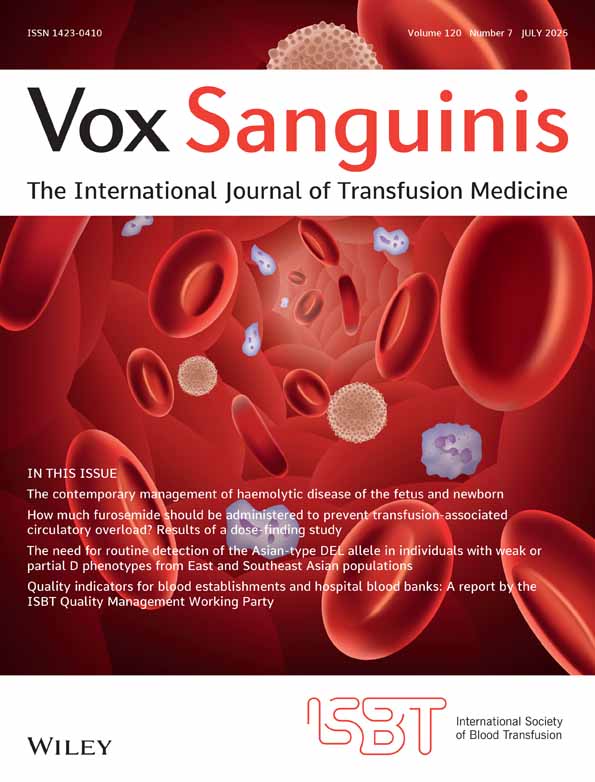Clinical Tolerance of Methylene Blue Virus-Inactivated Plasma
A Randomized Crossover Trial in 12 Healthy Human Volunteers
Abstract
Objectives: Baxter's methylene blue (MB) photoinactivation of fresh frozen plasma (FFP) is a method that effectively removes any intracellular potentially infectious agent, such as prions, by filtration combined with an improved photochemical virus inactivation on a single unit of FFP. The purpose of this study was to demonstrate clinical and biochemical tolerance of MB-treated plasma in healthy human volunteers. Methods: The design was a crossover randomized trial. Twelve subjects received alternatively treated and nontreated autologous FFP. Coagulation parameters were tested as well as clinical and biochemical parameters. Results: No clinical or statistically significant difference was detected for any of the parameters. Conclusion: Transfusion of FFP treated for viral reduction by an improved MB photoinactivation method was shown to be safe and did not affect the normal function of coagulation proteins. We consider this method as a valuable alternative to other methods described as it combines the photoinactivation with a filtration step removing any intracellular infectious agents, such as prions.




